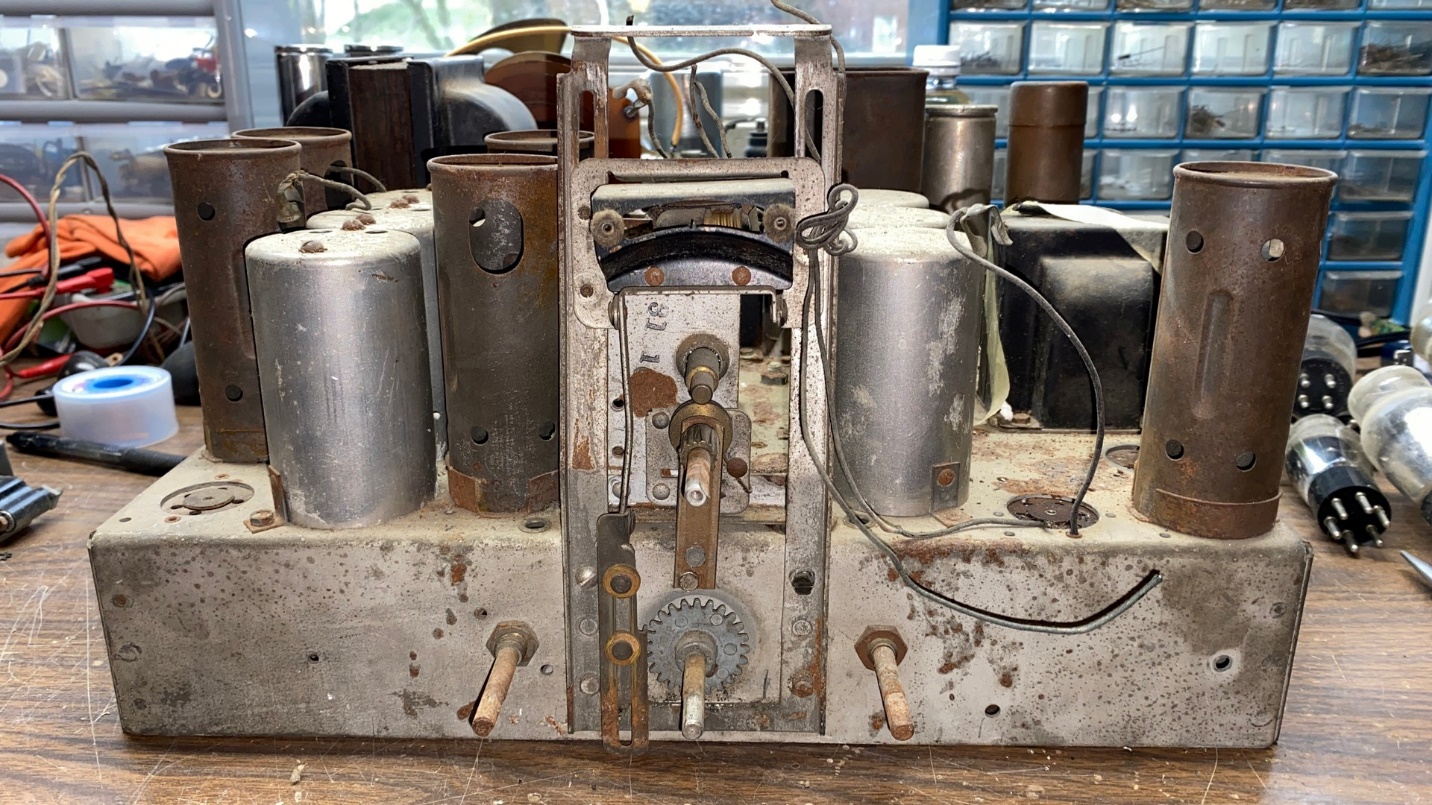
Sad as it may seem to any dedicated radio collector, there are some old sets which are not worth restoring. Sometimes, it takes parts from one dilapidated old radio in poor condition to furnish parts for other radios. This becomes necessary at times since certain parts, such as tapped volume controls, IF transformers, specialty tone control switch assemblies, tube shields, and other vintage parts have not been manufactured in decades, and there are times our vintage radios may be missing some of these components.
Recently, I needed a two-piece insulator which mounts in a large hole of a 1931-35 Philco radio chassis for a model 59C radio I was restoring. This two-piece insulator mounts the radio’s antenna terminal to the chassis while preventing the antenna from shorting out to the chassis.
I have been trying to get rid of spare parts and parts chassis over the past few years because of the cancer, and did not have a lot left in the way of vintage parts or parts chassis. But I did have one very rusty Philco 16 code 122 chassis remaining in the house garage, which fortunately had the antenna insulator I needed for the 59C.
The rivet holding the Fahnestock clip and the two halves of the insulator was ground off, along the clip to be removed, the rivet removed, and the two halves of the insulator to likewise be removed from the old Model 16 chassis.
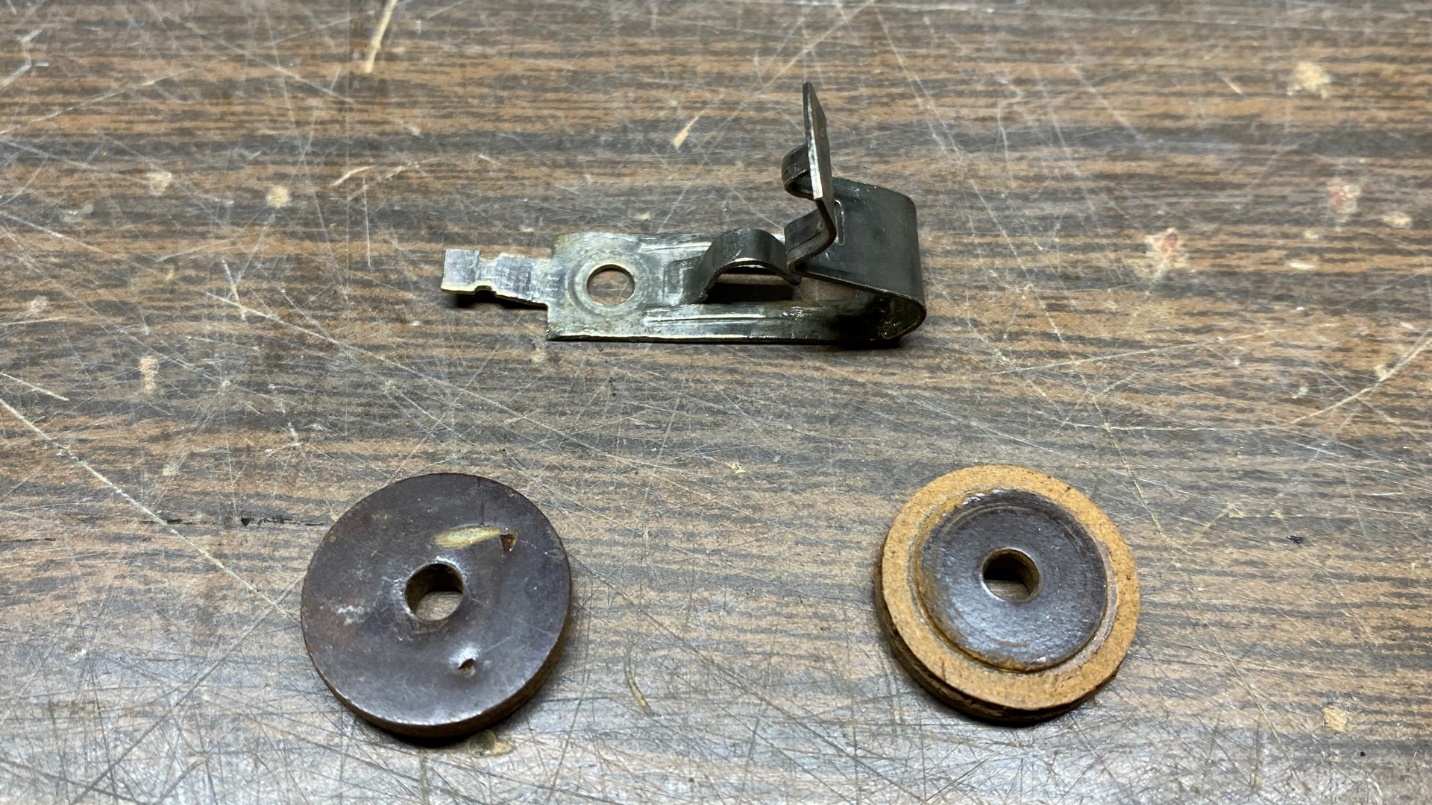
The original Fahnestock antenna clip from the 59C, with phenolic insulators taken from a junked Philco 16 chassis.
After removing the insulator I needed, I decided to proceed with removing any other usable spare parts.
The first part to be removed was the set’s shadow meter. Once it had been removed, the chassis was flipped upside down and I began to cut wires from the terminals of the set’s many bakelite block capacitors.
I also removed the volume control, tone control, the electrolytic condenser cans, and the trimmer condensers.
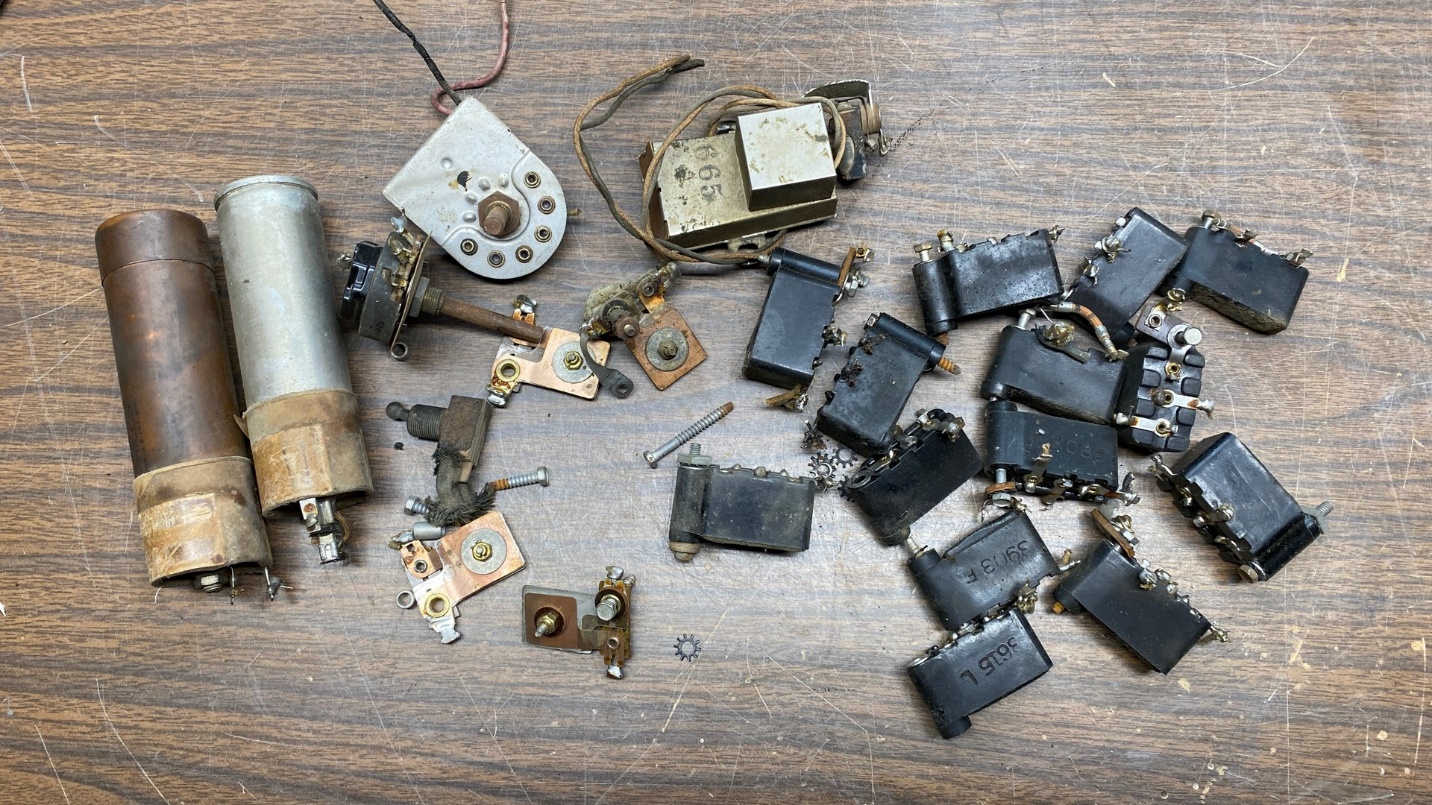
The various parts which were removed from the model 16 chassis.
I will likely have no further need of these things, but someone may want them at a later time.
I noticed the set still had nine of its eleven tubes, along with a complete set of (rusty) tube shields. So, my next chore was to remove those tube sockets, clean them up, and test them.
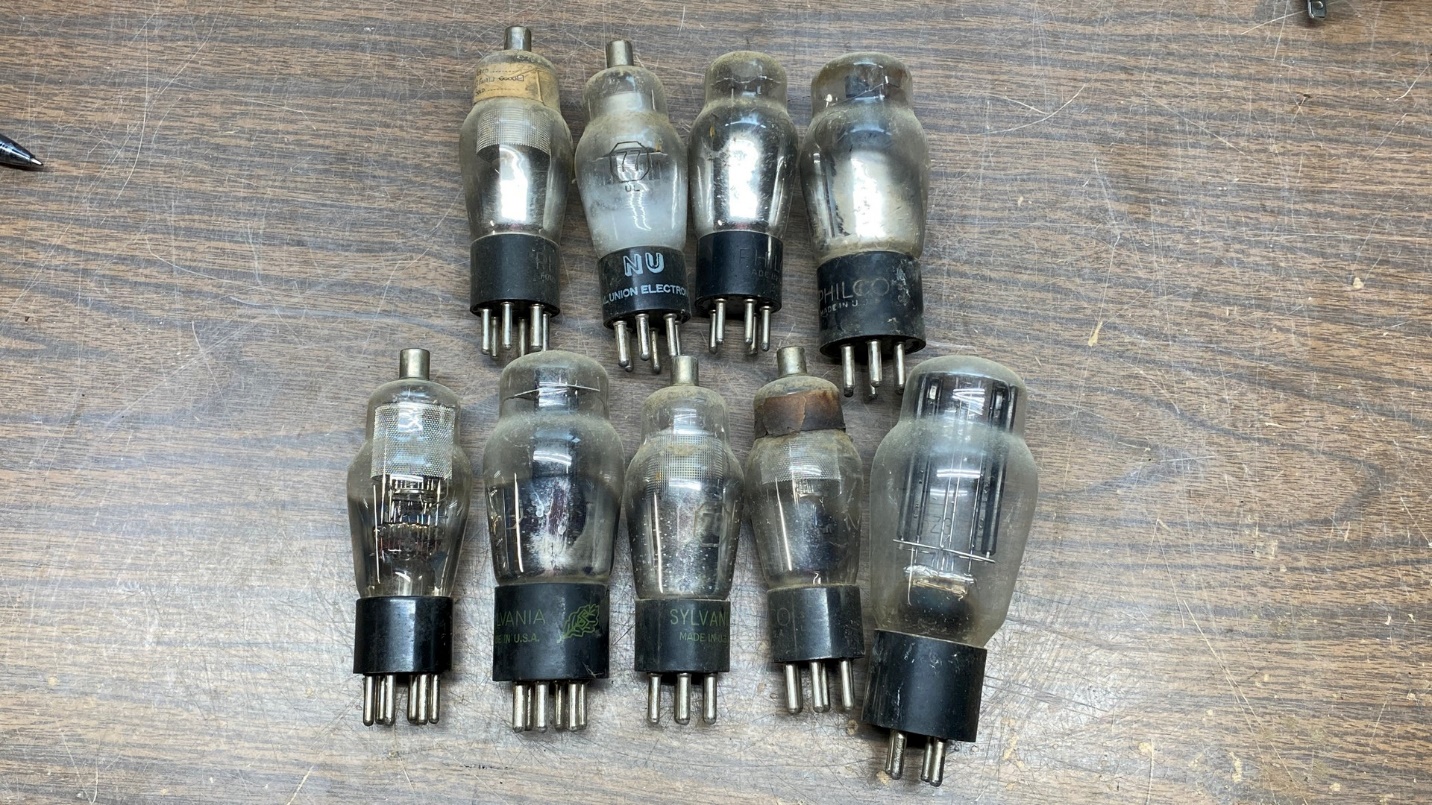
Nine tubes which were removed from the chassis.
Right away, I noticed that one of those tubes was white in the middle where it normally would have been silver in color – a sure sign that the tube had lost its vacuum. Not surprisingly, a crack was found on top of the tube which would explain the air leakage and loss of vacuum.
I tested the remaining eight tubes. Four of those were bad while four were good. The bad ones went into the trash while the good ones were added to my tube inventory.
By the time I was finished removing parts from the chassis, it looked as shown below.
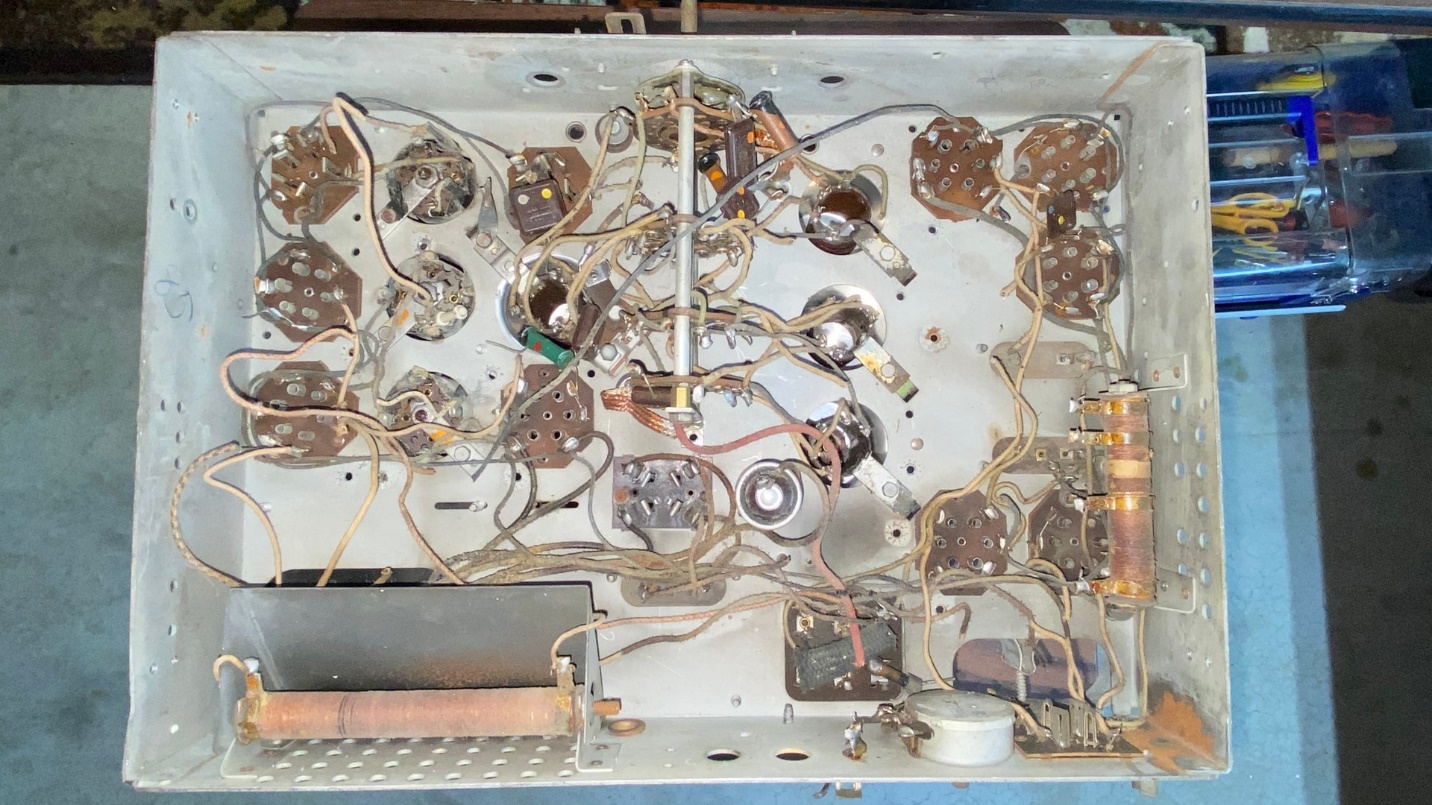
The chassis is now mostly bare underneath.
Sometimes it is necessary to part out an old radio. Most of us in the hobby try to only do this to radios which are in bad shape, missing major parts, or both. The parts which can be pulled from these sets can often help other radios to be successfully restored. And besides, stripping the usable parts from a rusty old chassis can allow you to get rid of that old chassis in good conscience.
Remember, when it comes to having parts chassis laying around, less is better. None of us are getting any younger, and as we age, as health issues develop, etc., you really should be thinking about reducing that clutter you have laying around taking up space. Think about your loved ones who will be left to deal with all that clutter after you are gone. Do them a favor and start reducing it now, while you are still able to do so yourself. You will be helping yourself and your loved ones by reducing that clutter while helping your fellow collectors by sharing your extra parts with them.